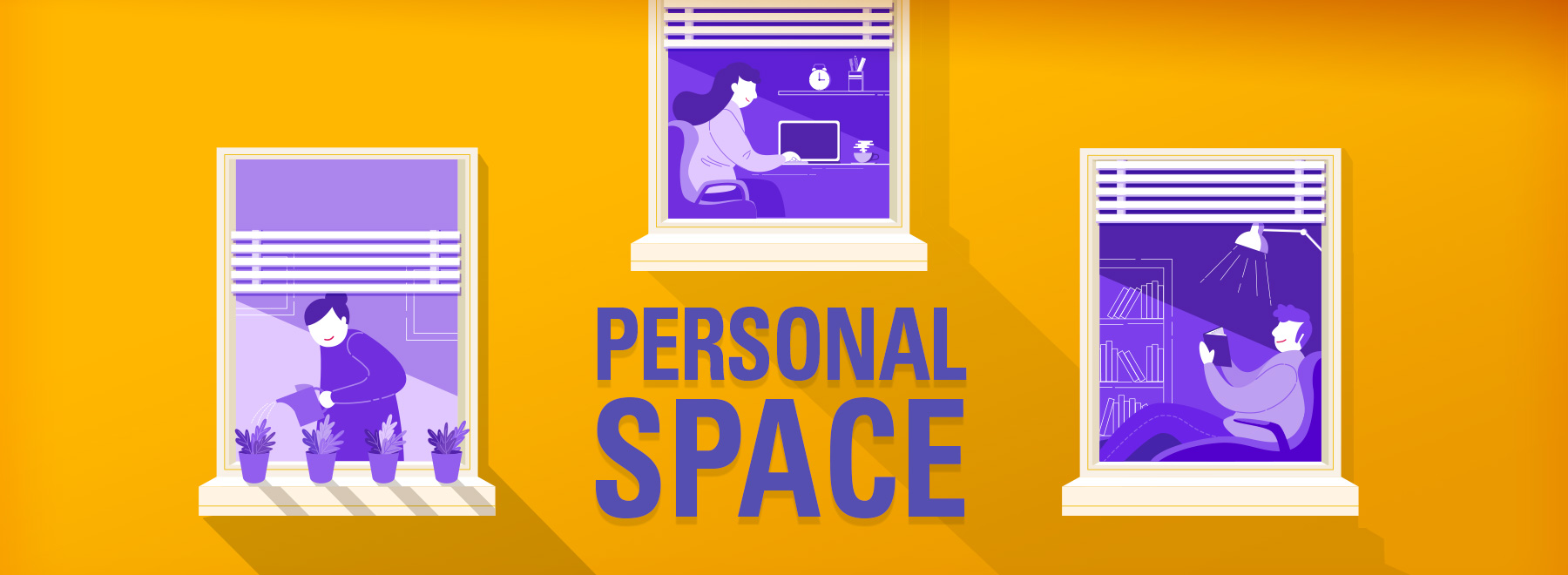UMMC pandemic expert: Social distancing saves lives, lessens COVID-19 spread
Mississippi’s statewide shelter-in-place order issued April 1 will help keep people safe during the COVID-19 pandemic. By closing non-essential businesses, banning social gatherings of 10 or more people and among other guidelines, the order promotes social distancing, the most important tool we have in slowing COVID-19 transmission.
This will save lives and save resources, according to a University of Mississippi Medical Center emergency physician.
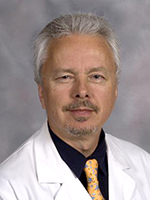
“The key is to minimize person-to-person transmission, especially among people who do not normally interact with each other,” said Dr. Richard Finley, professor of emergency medicine at UMMC, who has studied models of the factors influencing the course of pandemic illness.
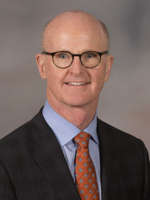
“With several forecast models predicting that Mississippi will see a wave of infections peaking in the last two weeks of April and early May, the importance of social distancing now cannot be overstated,” said Dr. Charles O’Mara, UMMC associate vice chancellor for clinical affairs.
Gov. Tate Reeves issued the order to start at 5 p.m. Friday, April 3 and last until 8 a.m. Monday, April 20.
COVID-19 is a viral illness spread mainly by coughs and sneezes producing viral-laden air droplets that can be inhaled or could land on surfaces we touch and then conveyed to ourselves. Avoiding viral droplets in the air by social distancing, combined with frequent hand washing to prevent surface contact exposure, provides our best defense now against contracting the disease, according to the UMMC experts.
Social distancing currently means avoiding groups of more than 10 people and keeping a distance of six feet between individuals.
There is evidence that COVID-19 can be transmitted in the absence of symptoms, making it critical for people to stay home whenever possible and to keep their distance from others during unavoidable outings. Wherever large crowds congregate, they could create a dangerous situation.
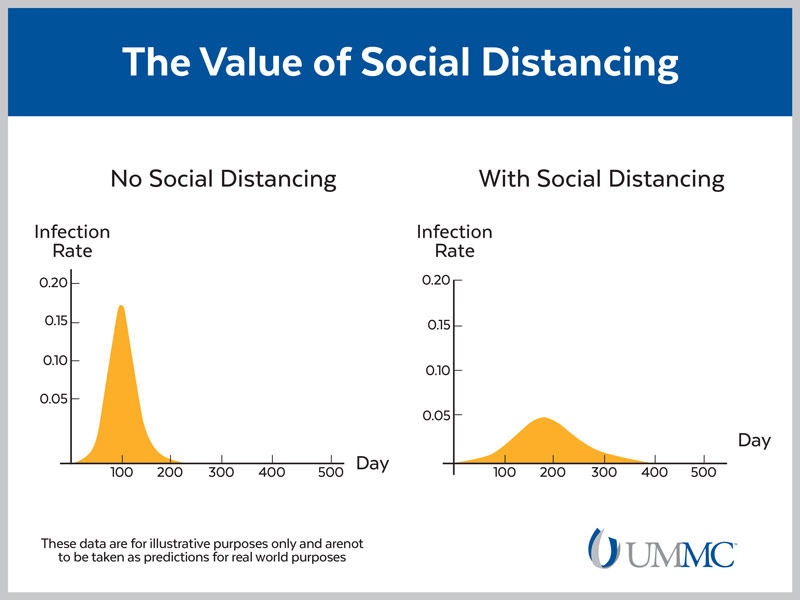
“With frequent transmission between people, you will have a rapidly accumulating number of cases that appears as a sharp peak or spike in the number of infections,” said Finley, who also has a faculty appointment in the Department of Medicine’s Division of Infectious Diseases. This high peak can overwhelm hospitals, health departments and other organizations responding to the pandemic and providing care that minimizes the death toll.
This is why doctors and scientists say we must “flatten the curve” to prevent the spike in COVID-19 infections and deaths. If the worst-case scenario peak looks like the Matterhorn, then the flattened curve is a rolling Appalachian plateau, with fewer deaths and infections in time.
And experience from other countries strongly suggests that the stringency of social distancing, especially when early in the process, correlates directly with its positive impact on reducing infection and death.
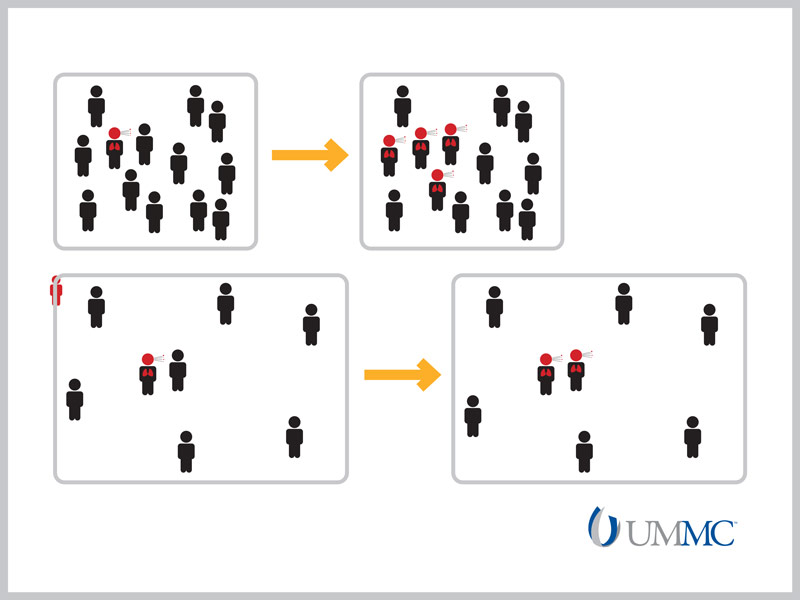
“The trade-off is that (with a flattened curve) the pandemic goes on for a longer period of time,” but with relatively smaller numbers of people becoming infected and dying, Finley said. He said we avoid the high peak and curb COVID-19 spread through social distancing and good hygiene, particularly hand washing. These are our best options now, even with the anticipation that new treatments and vaccines for COVID-19 will become available in the future to battle the pandemic.
It’s also important for medical and public health professionals to increase COVID-19 testing and contact tracing for known cases. Widespread, rapid testing helps identify infected patients sooner and prevents them from spreading the infection to others. This will also allow epidemiologists to determine when the number of new cases per day begins to drop.
Finley said we “need to be fairly far down the peak of infections” – perhaps at half the number of peak new cases – before social distancing measures can be safely relaxed to prevent a second outbreak. That could take a month or more, he said, depending on how willing people are to adhere to social distancing rules and how well governments and society respond to and cope with COVID-19 and the environment surrounding it.
Mississippi may still have a good chance to prevent a high peak scenario, Finley said.
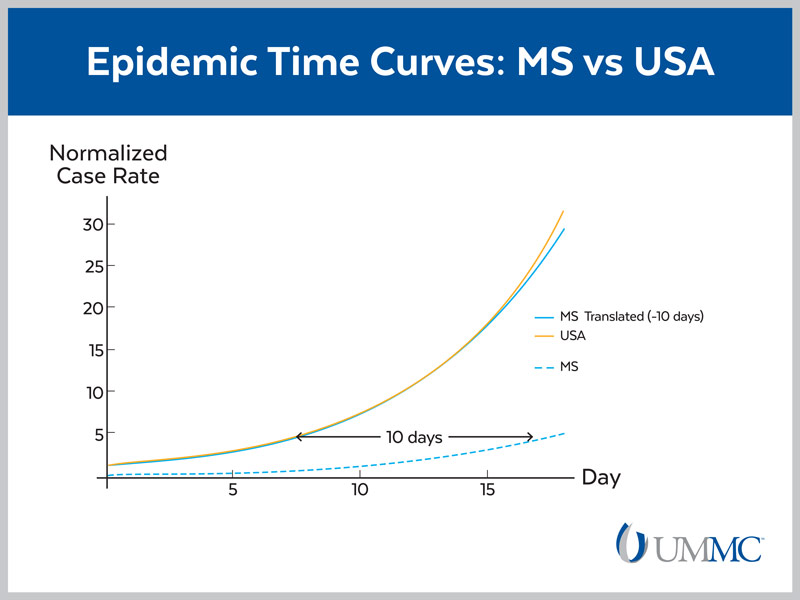
“The numbers of known cases in Mississippi are rising at about the same rate as the rest of the United States, but delayed by about 10 days,” he said, “but our social distancing efforts began around the same time as the rest of the country, giving us a relative advantage.”
There’s still a lot we don’t know about COVID-19’s propensity to return in the future. Related coronavirus diseases, such as sudden acute respiratory syndrome and Middle Eastern Respiratory Syndrome, had high mortality rates and little spread from asymptomatic carriers, allowing infected patients to be isolated more quickly so the diseases didn’t spread and become pandemics. Neither is the case with COVID-19.
COVID-19 is both more infectious and more deadly than seasonal influenza, but whether and how widely it will persist in the future is as yet unknown.
The current COVID-19 crisis won’t last forever, but in the meantime, governments and social networks need to keep the pressure on to maintain social distancing, Finley said.
“If you stop social distancing measures too early, you could see a rebound in the number of cases, and that risks overwhelming the health care system again,” he said.
The above article appears in CONSULT, UMMC’s monthly e-newsletter sharing news about cutting-edge clinical and health science education advances and innovative biomedical research at the Medical Center and giving you tips and suggestions on how you and the people you love can live a healthier life. Click here and enter your email address to receive CONSULT free of charge. You may cancel at any time.



